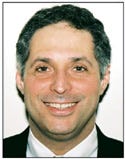REGULATORY OUTLOOK
In 1994, Underwriters Laboratories (UL) published the first edition of UL 2601-1, which ultimately replaced the traditional U.S. medical device standard UL 544.1,2 Unlike its predecessor, the UL 2601-1 standard adopted the requirements of the IEC 60601-1:1988 standard that was quickly becoming the global benchmark for electrical medical equipment safety, and added requirements from three other standards: AAMI ES 1, National Fire Protection Association (NFPA) 99 (based in large part on ES 1), and NFPA 70, the National Electrical Code (NEC).3-6 The harmonization of the U.S. standard with the IEC document that was accepted by most regulatory bodies worldwide proved to be a boon to U.S. manufacturers. However, in addition to the base requirements of the International Electrotechnical Commission (IEC) standard, UL (with input from U.S. manufacturers) added some 32 pages of additions and modifications to the requirements in IEC 60601-1:1988, 2nd ed. Although such deviations were not unique to the United States, the quantity of deviations in the UL document was significantly higher than was found in comparable national adoptions of IEC 60601-1:1988.
|
Eisner |
|
O’Brien |
|
Schmidt |
|
Modi |
In Europe, EN 60601-1 (adopted by CENELEC on behalf of all European member states) had no technical deviations from the IEC standard, and Canada's version (C22.2 No. 601.1) included only seven pages of unique Canadian requirements.7,8 This said, UL deserves credit for recognizing the benefits of moving toward a globally harmonized standards environment and for taking steps to move the United States in that direction. UL subsequently revised UL 2601-1 in 1997 to incorporate modifications made in Amendment 2 to IEC 60601-1 and again in 2003 when UL 2601-1 was renumbered as UL 60601-1.
ANSI/AAMI ES 60601-1:2005 was published to minimize the deviations and to bring the U.S. document more in line with the requirements worldwide.9 However, an amendment to ANSI/AAMI 60601 will likely be published in early 2007 to address recently discovered discrepancies with IEC 60601-1. It is important to understand the background of the changes leading up to this amendment and the implications of those changes.
Background
Shortly before UL published the second edition of UL 2601-1, IEC Subcommittee 62A began to produce a third edition of IEC 60601-1.10 This third edition of the medical device standard would not simply update the 1988 predicate document, but also would revolutionize the concept of device safety standards. Because of the scope of changes to the standard, the project was planned for publication in 2004 (an eight-year project).
The new standard would introduce the concept of multiple levels of protection (based on whether the safety of the user or patient was being addressed) and also would incorporate the requirement to apply a process standard (ISO 14971, “Risk Management of Medical Devices”) to demonstrate compliance with the device standard.10 In December 2005, IEC 60601-1, 3rd ed., was published.11
Shortly after IEC began the project to produce the third edition, discussion began in the United States to determine which standards development organization would publish the U.S. version of the document. For several reasons, it was determined that the U.S. version of IEC 60601-1, 3rd ed., would be an AAMI standard. AAMI was the publisher of the ES 1 standard (one of the base documents for UL 2601-1, UL 60601-1, and NFPA 99) and is the largest source of medical device standards in the United States. Moreover, it was the coordinating organization for participation in IEC medical standardization. This work was coordinated within AAMI by its Electrical Safety Committee, and in December 2005 (in parallel with publication of the IEC standard), ANSI/AAMI ES 60601-1: 2005 was approved in the United States. The document was then published by both ANSI and AAMI in February 2006.
The New Standard
One of the committee's first decisions was that the AAMI version of 60601-1 would incorporate only unique requirements that were necessary to comply with NFPA 99 and NFPA 70. This policy decision resulted in the U.S. deviations filling less than two pages. The following represents a brief summary of those U.S. deviations (clause numbers represent the clause of the IEC 60601-1 standard that is modified):
• Clause 4.8: Components that ensure that the safety of the equipment must comply with ISO or IEC component standards. ES 60601-1 gives components certified to ANSI standards equal status to IEC- or ISO-certified components.
• Clause 4.10.2: Polyphase mains supplies are allowed to be as high as 600 V (as opposed to the 500-V limit in the IEC document).
• Clause 8.2: All fixed and permanently installed equipment is required to be Class I.
• Clause 8.7.3: The allowance in the IEC standard for permanently installed equipment to exceed the allowable earth leakage currents was deleted.
• Clause 8.11: Permanently installed equipment (other than x-ray equipment connected to a branch circuit rated at 30 A or less) must allow connection to wiring systems in accordance with the NEC. Connecting cords between parts of equipment must meet the requirements of the NEC. Finally, outlets (receptacles) provided as part of equipment for use in pediatric areas must be rated as tamper resistant or include a tamper-resistant cover.
• Clause 8.11.3.2: Flexible power-supply cords must meet the requirements of the NEC (voltage rating of the cord in accordance with the equipment rating) and must have appropriate ampacity.
|
The zealousness of the AAMI Electrical Safety Committee to minimize the list of U.S. deviations is laudable; however, shortly before publication (too short a period to take action), the committee became aware that it had inadvertently omitted additional deviations from the document. To resolve these discrepancies, the committee will most likely publish an amendment to ANSI/AAMI 60601-1 early next year. The additional deviations and their content are described in the sidebar, “New Deviations,” on this page.
The third edition of 60601-1 introduced the concept of touch leakage current to earth leakage current. Touch currents (those that can be contacted by users or patients through an enclosure) are limited to 100 µA in normal condition and 500 µA in single-fault condition by IEC 60601-1:2005. Because the Electrical Safety Committee anticipated that NFPA 99 would be harmonized with these limits, no deviations were included in the ANSI/AAMI standard. However, the current version of NFPA 99 limits these values to 100 and 300 µA, respectively. Interestingly, the NFPA standard references AAMI ES 1 as its source for these values, and the new ANSI/AAMI 60601-1 replaced ES 1.
In addition, the new IEC standard has redefined earth leakage current as the currents flowing inside of the equipment (and therefore not hazardous to users or patients) and the mains distribution system. For this reason, earth leakage currents are limited (by the IEC standard) only such that they do not damage the installation's earthing system or cause nuisance tripping of current imbalance breakers (5 mA normal condition and 10 mA in single-fault condition).
The AAMI Electrical Safety Committee intends to pursue changing the NFPA 99 standard to reflect the values in the IEC 60601-1 standard. The first of these changes will be to recognize the difference between touch current (accessible to persons) and earth leakage (not accessible to persons).
The committee will also petition to increase the limit for touch current (currently called earth leakage in NFPA 99) to 100 µA in normal condition and 500 µA in single-fault condition versus the current limits of 100 and 300 µA, respectively. This change will be requested based on the fact that equipment meeting the higher (100/500) limits has been used worldwide without evidence that such limits increase the risk of shock to patients (a position with support within FDA). Finally, the committee will petition NFPA to recognize (as does IEC 60601-1) that the limits for true earth leakage current are an issue of preventing damage to facilities and that it does not need to be limited to prevent electric shock. If these goals are met, the leakage current limits in the United States will finally be harmonized with the rest of the world.
In evaluating the discrepancies between ANSI/AAMI 60601-1 and the NEC and determining whether the new 60601-1 standard should be modified or whether the NFPA standards should be changed, the AAMI Electrical Safety Committee faces a challenge.
In working on the new standard, it became evident that the hierarchy of requirements and their source is not always clear. The perfect example of this situation is the leakage current limits in NFPA 99 that reference AAMI ES 1 (now replaced by ANSI/AAMI ES 60601-1) as its source and justification. Does the NFPA 99 standard as part of the NEC dictate what leakage currents are allowed in the ANSI/AAMI document, or does the ANSI/AAMI standard (as the source document replacing AAMI ES 1) dictate that the NFPA 99 standard should be changed?
Conclusion
The new ANSI/AAMI ES 60601-1: 2005 still leaves several issues unresolved. However like IEC 60601-1, 3rd ed., the new AAMI standard for electrically operated medical devices must be recognized as representing one of the most important innovations among U.S. standards in many years. Its goal of including only those requirements that genuinely ensure the safety of those who come into contact with the equipment or will benefit from the treatment it provides is admirable. In an environment in which the cost of treatment escalates at a dizzying pace, this standard does its best to ensure safety while maximizing the availability of innovation in the device industry. Copies of ANSI/AAMI ES 60601-1: 2005 may be purchased through AAMI's Web site (www.aami.org) or via phone at 703/525-4890.
Leo Eisner is head of Eisner Safety Consultants (Portland, OR) and a member of MD&DI's Editorial Advisory Board. E-mail him at [email protected]. Frank O'Brien, founder and principal engineer of O'Brien Compliance Management (Boston), can be reached at [email protected]. Mike Schmidt is principal consultant and owner of Strategic Device Compliance Services (Cincinnati). He can be contacted via e-mail at [email protected]. Dan Modi, associate director for regulatory affairs and product certification at Alcon Research Ltd. (Irvine, CA), can be reached at [email protected].
References
1. UL 2601-1, “Medical Electric Equipment—Part 1: General Requirements” (Northbrook, IL: Underwriters Laboratories, 1997).
2. UL 544, “Medical and Dental Equipment” (Northbrook, IL: Underwriters Laboratories, 1985).
3. IEC 60601-1, 2nd ed., “Medical Electrical Equipment—Part 1: General Requirements for Safety” (Geneva: International Electrotechnical Commission, 1988).
4. ANSI/AAMI ES 1:1993, 3rd ed., “Safe Current Limits for Electromedical Apparatus” (Arlington, VA: AAMI, 1993).
5. NFPA 99: Standard for Health Care Facilities (Quincy, MA: National Fire Protection Association [NFPA], 2005).
6. NFPA 70: National Electrical Code (Quincy, MA: NFPA, 2005).
7. EN 60601-1, “Medical Electrical Equipment. General Requirements for Safety—Collateral Standard—Electromagnetic Compatibility, Requirements, and Tests” (Brussels: European Committee for Electrotechnical Standardization, 2002).
8. C22.2 No. 601.1, “Medical Electrical Equipment—Part 1: General Requirements for Safety” (Mississauga, ON, Canada: Canadian Standards Association, 2002).
9. ANSI/AAMI ES 60601-1:2005, “Medical Electrical Equipment, Part 1: General Requirements for Basic Safety and Essential Performance” (Arlington, VA: AAMI, 2005).
10. ISO 14971, “Risk Management of Medical Devices” (Geneva: International Organization for Standardization, 2003).
11. IEC 60601-1, 3rd ed., “Medical Electrical Equipment—Part 1: General Requirements for Safety” (Geneva: International Electrotechnical Committee, 2005).
Copyright ©2006 Medical Device & Diagnostic Industry
About the Author(s)
You May Also Like




.jpg?width=700&auto=webp&quality=80&disable=upscale)


